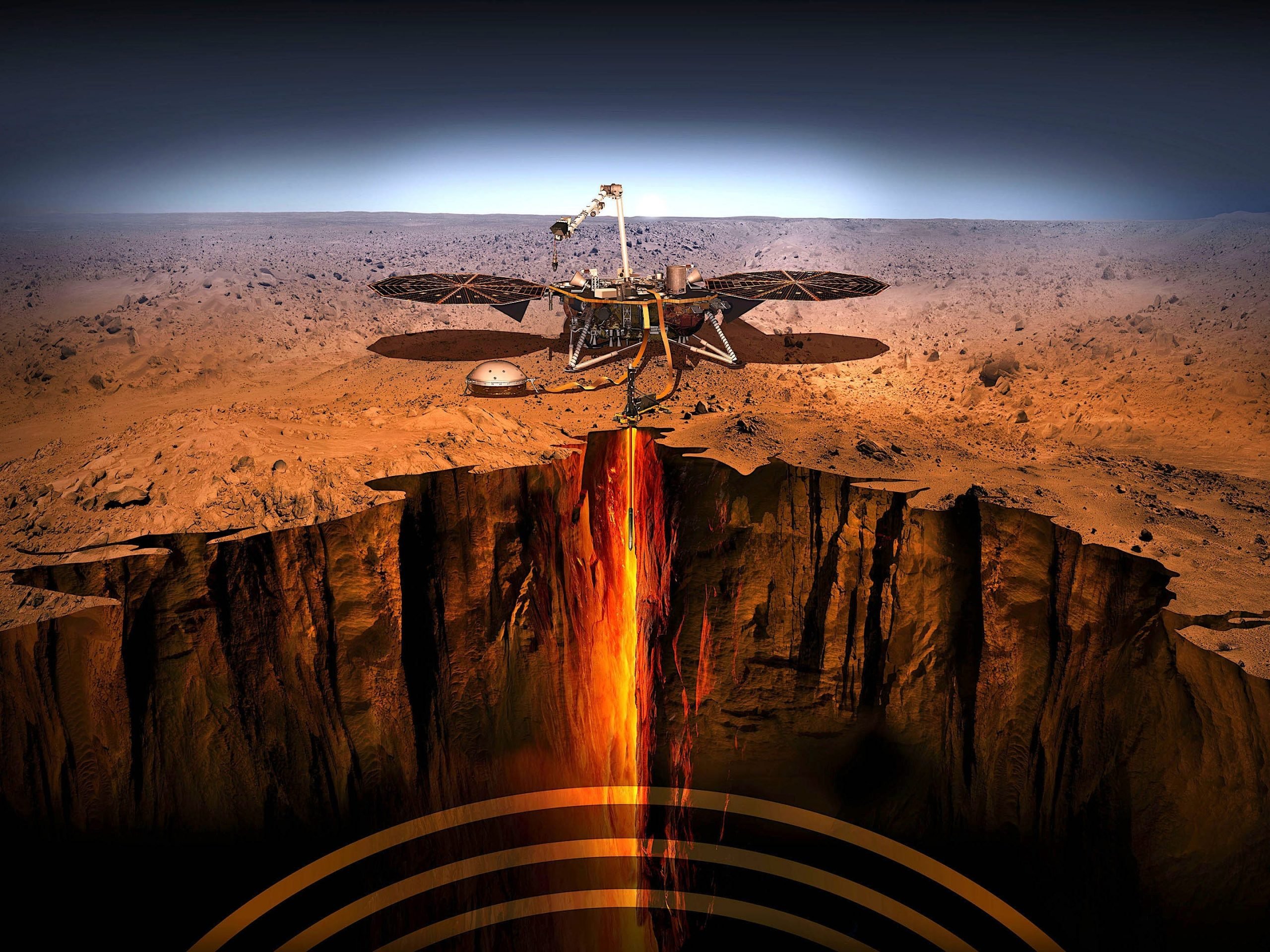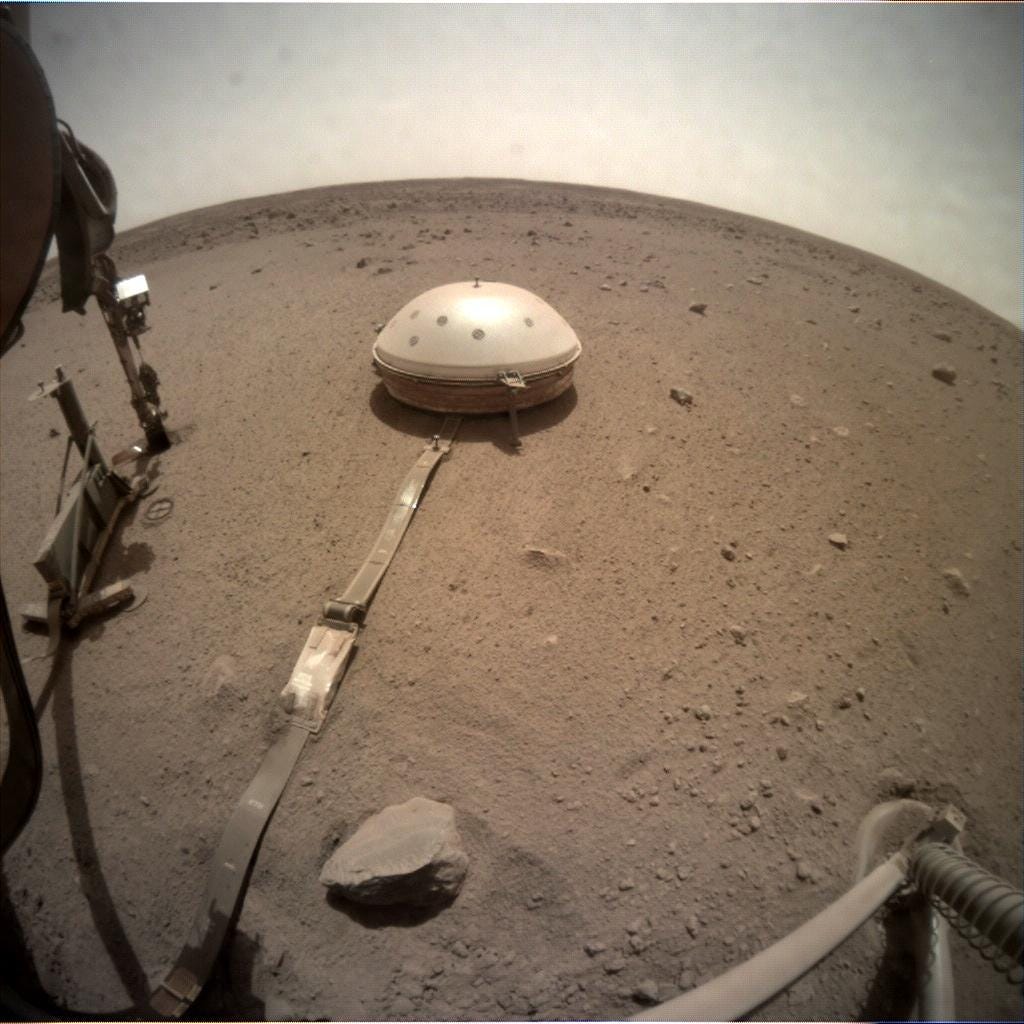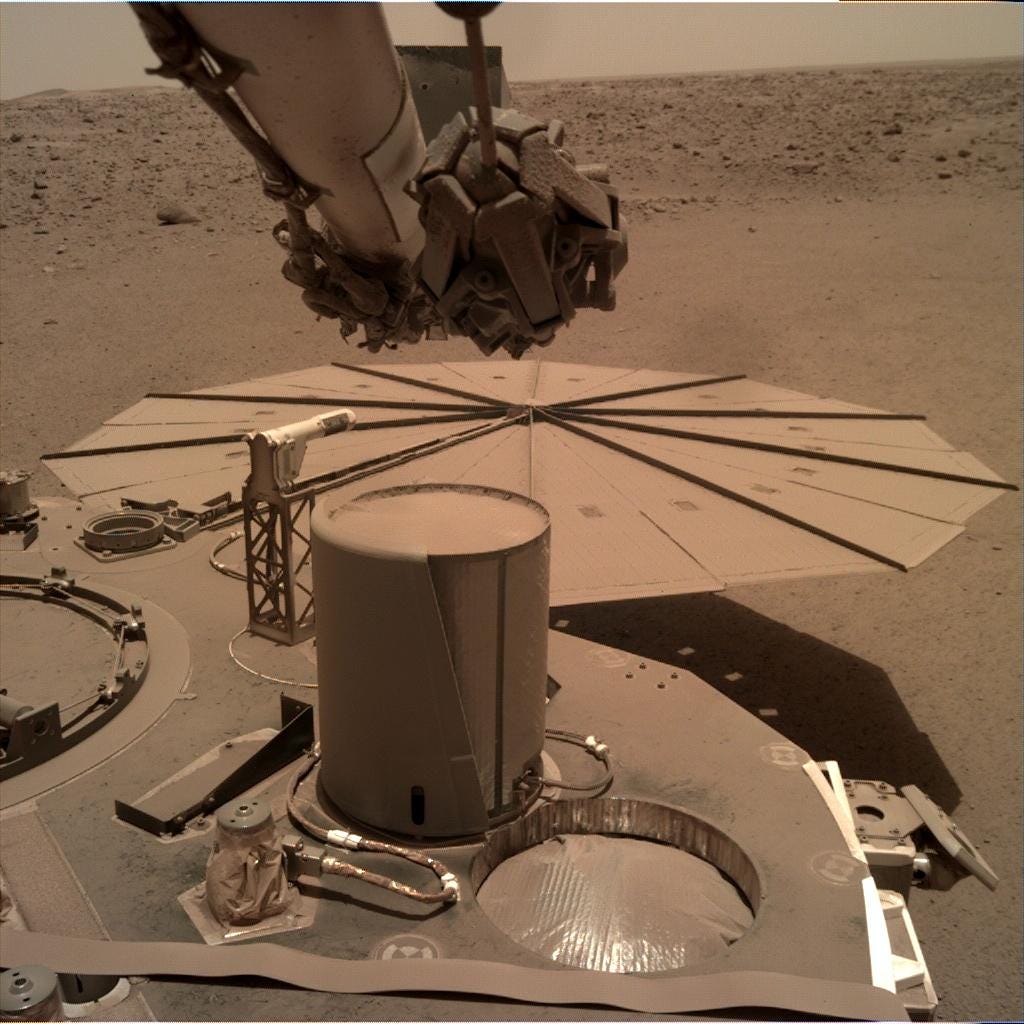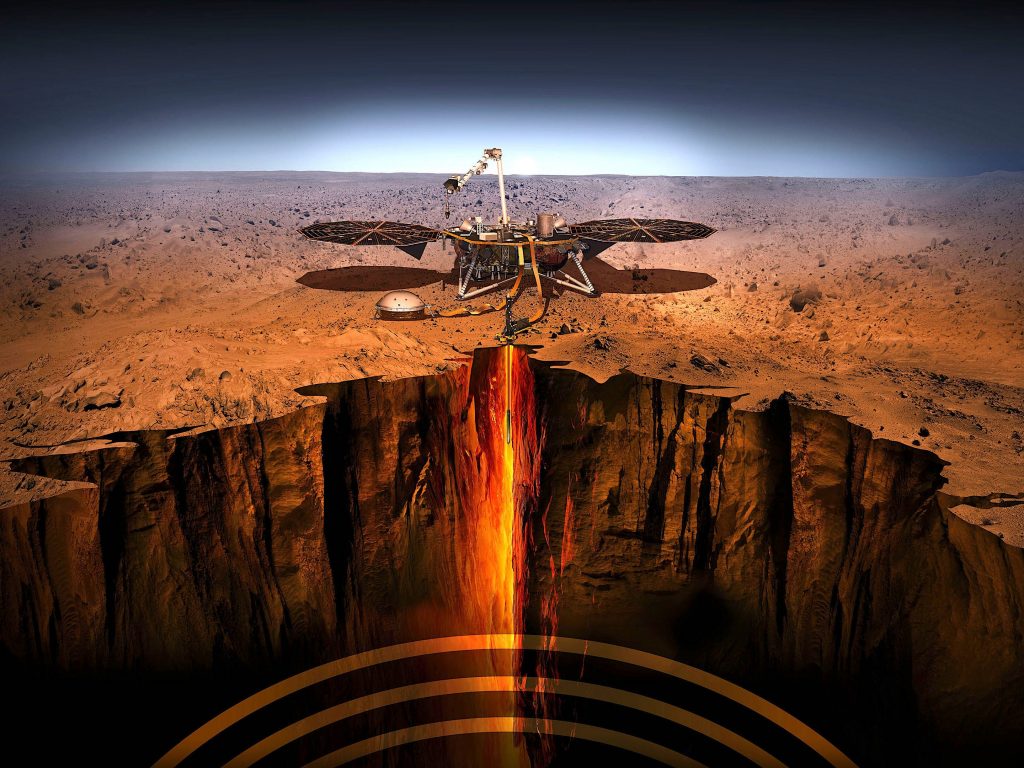
NASA/JPL-Caltech
- NASA's InSight lander has finally detected Mars quakes with magnitudes above 4.
- One quake lasted nearly 90 minutes and was five times more energetic than the previous record-holder.
- Big quakes help NASA scientists peer into Mars' core to learn how habitable planets evolve.
- See more stories on Insider's business page.
NASA's Insight lander was sitting silently in the empty dust plains of Mars on Saturday, as it had for the past 1,000 Martian days, when the ground began to rumble.
The shaking continued for nearly an hour and a half.
The robot beamed the data from its seismometer back to Earth, and NASA scientists realized they had what they'd been waiting for: a big quake. Insight had recorded a magnitude 4.2 Mars quake – the kind NASA scientists had been wanting to observe since Insight touched down on the red planet in November 2018.
Two other big ones recently rolled through, too: On August 25, the lander felt two quakes of magnitudes 4.2 and 4.1.
Before these, the biggest quake the lander had felt was a 3.7 in 2019.

NASA/JPL-Caltech
"It looks like there are fewer large quakes on Mars, relative to the number of small quakes, than we would expect. It's a little bit puzzling," Bruce Banerdt, the principal investigator for InSight, told Insider in April.
But the Saturday quake was five times more energetic than the 3.7-magnitude rumble.
These big quakes offer a missing piece of the Martian puzzle. Scientists can use their seismic waves to learn about the makeup of Mars' core, in the same way the waves of an X-ray or CAT scan are used in the body. Getting more detailed views into Mars' insides can yield clues about how the planet was born and how it has evolved over time. That knowledge could be crucial in astronomers' efforts to find other worlds that might host life.
"By looking at Mars' core and looking at Mars' crust, and understanding that these haven't changed very much in the last 4.5 billion years, we can get a glimpse into what the Earth might have looked like very early on," Banerdt said in April. "Mars is helping us to understand just how rocky planets form and how they evolve in general."
Mars quakes have revealed an Earth-like planet with a moon-like crust
InSight has detected more than 700 quakes in total, and they've revealed a lot about the planet's interior already. Scientists have learned that Mars' crust is thinner than they thought, and that it's more like the moon's crust than Earth's - it's broken up from asteroid impacts.
Because the Martian crust is so dry and broken, its quakes last much longer than earthquakes. They reverberate between cracks in the crust, and there's not as much moisture to absorb them. So the quakes InSight has felt have typically lasted 10 to 40 minutes.
Recently, scientists have also used the quakes to determine that Mars has a molten core. They're not yet sure whether a solid inner core hides beneath a molten outer core, the way it does on Earth.
NASA creatively solved an energy crisis to keep InSight's seismometer on

NASA/JPL-Caltech
InSight almost had to shut down its seismometer earlier this year. The robot was experiencing an energy shortage because dust was building up on its solar panels.
Among NASA's other Mars robots, big gusts of wind have whooshed through regularly enough to clear dust off the solar panels. But the plains where InSight sits turned out to be abnormally still.
Then to make matters worse, Mars was entering the coldest part of its year during our spring and summer, when the red planet got the furthest from the sun in its oval-shaped orbit. That meant InSight would need to funnel even more energy into its heaters to survive.
So NASA decided to put InSight into hibernation. In February, the lander began incrementally shutting off its scientific instruments in order to conserve power to keep itself warm. In June, the team was preparing to shut down the seismometer, and Banerdt told a NASA group that the lander's life might not last past April 2022, according to SpaceNews.
But then the InSight team crafted an ingenious way to clean off the solar panels. They instructed the robot to scoop up dirt and slowly trickle it next to the panels. Some of the large grains of sand got caught in the wind, bounced off the solar panels, and took some stubborn dust with them - enough to add about 30 watt-hours to Insight's daily energy production after the first attempt.
They carried out that process several more times in order to ensure a steady enough power supply to keep the seismometer running through June and July, when Mars started swinging back towards the sun.
"If we hadn't acted quickly earlier this year, we might have missed out on some great science," Banerdt said in a press release.

